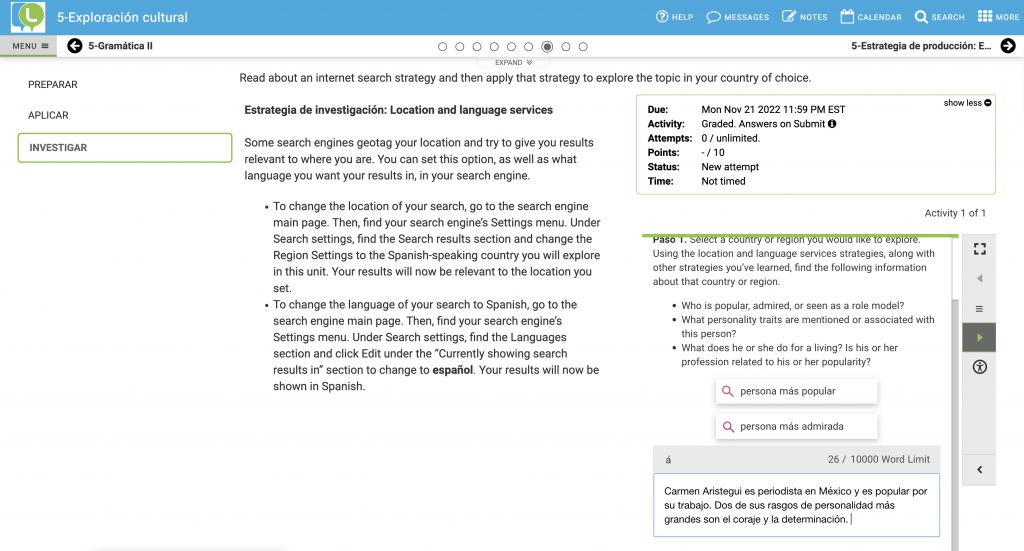Interpretive, Interpersonal, and Presentational Modes of Communication
Exploring Culture
Día de Los Muertos is a practice that I found extremely fascinating from a cultural perspective. For instance, most people might connect it with the Western practices of Halloween, but it is actually a holiday all on its own. During this holiday, Hispanics honor loved ones that have died, by decorating altars with yellow marigolds and shrines to celebrations involving foods and drinks that the loved one enjoyed in life. They also set up Calaveras that are made out of various materials such as clay. Another type of Calavera is a skull made entirely out of sugar. They will also paint their faces in the form of skulls. These traditions and practices taught me that Spanish culture values life as well as death. They celebrate death, not as something as final and sad, but as something to promote the legacy of the one who has passed.
Engaging in Communities
I do not have very many connections with the Spanish community, but I do hear about it a lot from friends who work with Spanish-speaking people. These friends will tell me that engaging and participating in these communities is important because those people are human beings just like us. They might be a little different culture-wise, but we learn a lot from them, and they can learn from us. Their culture often weaves into ours and creates a beautiful tapestry of relationships between people.
Interpersonal Communication, Presentational Speaking, and Interpretive Listening
I have grouped these categories together because they all seem to overlap with each other.
Several of our assignments included Flipgrid responses to our professor. She would record herself asking us questions and speaking to us in general. She would then ask us to respond back in our own videos, just as if we were having a conversation with her.
Trying to actually interpret what the professor was saying was very difficult. I overcame it by attempting to translate it through online resources. I excelled at speaking. I could review my pronunciation next time.
Presentational Writing
In the Lingro program, I was given an assignment to look up the most popular person in Mexico. The assignment stated to name and talk about that person in Spanish.
Again, it was very hard to interpret instructions because I did not know a lot of the words. I do know how to write simple sentences with ease. To better create longer sentences, I can try to review my grammar.

Interpretive Reading
In Lingro, this is the same assignment mentioned in Presentational Writing. I had to read and interpret what the article was saying.
I did not find much of it challenging because I identified keywords that I could connect other words with. Truthfully, I did not find much of a takeaway from any of the lessons except for the cultural value.
